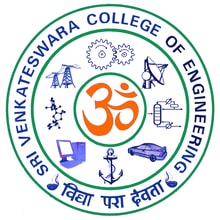It is not so…
Read this article you’ll get the complete understanding about the Biotechnology Engineering and scope in India.
What is Biotechnology Engineering?
Biotechnology engineering is an undergraduate degree program in applied sciences that amalgamates the facts from both Biological sciences and technology. This study utilizes the biological processes which include the study of use of microorganisms for the production of bio-products or knowledge of other metabolites like antibiotics, vaccines and further implement them in various industrial purposes.
In simple terms, Biotechnology is a study which involves the use of living organisms. The living organisms are used to make useful bio-products which can be utilized in industries. Biotechnological products are used in areas like agriculture, food, pharmaceuticals, cosmetics, medicine and bioremediation.
The Scope of Biotechnology is vast due to an increase in the research and science field. Biotechnologists can work in various environments like the industrial sector, medical sector, food manufacturing, and pharmaceuticals. This programme provides the knowledge to understand the occurrence and treatment of disease, food production, development of agriculture, protection of the environment and many more. However, as we are living in the age of research where science has taken the new form, we are at the pace of making new applications and innovations every day and this could be possible with combining Technology and biology together. So, youngsters have a lot of job opportunities in the field of Biotechnology.
What Is The Future Of Biotechnology In India 2020?
Biotechnology does not refer to any particular industry or job. Industrial sectors like food, textiles, agriculture, pharmaceuticals, leather, animal husbandry and many more are related to the Biotechnology field. The scope of biotechnology in India is immense because it is an innovative branch of science that has become popular among youngsters as it provides the various scope of career growth. If we define it according to the name of Biotechnology, It creates the mind-blowing fusion with the combinations of biology and technology.
Biotechnology is classified into two categories:
Ø R&D in Biological Sciences
Ø Industrial Processes
Careers in biotechnology deal with the research and development of Biochemistry, Microbiology, Cell Biology, Genetic Engineering, Molecular Biology, Immunology, Synthetic Biology, Cancer Biology, Neurobiology, Structural Biology and many more. Completely R&D work is performed in the Laboratories. While the Industrial processes deals with producing drugs, vaccines, biofuels and pharmaceuticals on an industrial scale using biochemical products and techniques.
If you have a Master’s or Postgraduate degree in the Biotechnology discipline, you have many options of Jobs. You have the option of applying in biochemical industries, bioprocessing industries, and other related organizations. Apart from this, an ample number of opportunities are on your doorstep. To quote an epitome, The students of B.Tech Biotechnology are working vastly in Pharmaceutical and Health care sectors. Let’s deep dive into these sectors to understand the market potential and opportunities for the students who are aspiring to have careers in Biotechnology.
Pharmaceutical Sector
India is the largest provider of generic drugs globally. Indian pharmaceutical sector supplies over 50% of global demand for various vaccines, 40% of generic demand in the US and 25% of all medicine in the UK.
India enjoys an important position in the global pharmaceuticals sector. The country also has a large pool of scientists and engineers who have the potential to steer the industry ahead to an even higher level. Presently, over 80% of the antiretroviral drugs used globally to combat AIDS (Acquired Immune Deficiency Syndrome) are supplied by Indian pharmaceutical industries.
Market Size
The pharmaceutical sector was valued at US$ 33 billion in 2017. The country’s pharmaceutical industry is expected to expand at a CAGR of 22.4% over 2015-20 to reach US$ 55 billion. India’s pharmaceutical exports stood at US$ 17.27 billion in FY 2018 and have reached US$ 19.14 billion in FY 2019. Pharmaceutical exports include bulk drugs, intermediates, drug formulations, biologics, Ayush & herbal products, and surgical.
Indian companies received 304 Abbreviated New Drug Application (ANDA) approvals from the US Food and Drug Administration (USFDA) in 2017. The country accounts for ~30% (by volume) and about 10% (value) in the US$ 70-80 billion US generics market.
India’s biotechnology industry comprising bio-pharmaceuticals, bio-services, bio-agriculture, bio-industry, and bioinformatics is expected to grow at an average growth rate of ~30% a year and reach US$ 100 billion by 2025.
Investments and Recent Developments
The Union Cabinet has given its nod for the amendment of the existing Foreign Direct Investment (FDI) policy in the pharmaceutical sector in order to allow FDI up to 100% under the automatic route for the manufacturing of medical devices subject to certain conditions.
The drugs and pharmaceuticals sector attracted cumulative FDI inflows worth US$ 15.98 billion between April 2000 and March 2019, according to data released by the Department of Industrial Policy and Promotion (DIPP).
Some of the recent developments/investments in the Indian pharmaceutical sector are as follows:
Ø Between July-September 2018, the Indian pharmaceutical sector witnessed 39 PE investment deals worth US$ 217 million.
Ø Investment (as % of sales) in research & development by Indian pharmaceutical companies increased from 5.3% in FY2012 to 8.5% in FY2018.
Ø In 2017, Indian pharmaceutical sector witnessed 46 merger & acquisition deals worth US$ 1.47 billion.
Ø The exports of Indian pharmaceutical industry to the US will get a boost, as branded drugs worth US$ 55 billion will become off-patent during 2017-2019.
Government Initiatives
Some of the initiatives taken by the government to promote the pharmaceutical sector in India are as follows:
Ø In October 2018, the Uttar Pradesh Government announced that it will set up six pharma parks in the state and has received investment commitments of more than Rs 5,000-6,000 crore (US$ 712-855 million) for the same.
The National Health Protection Scheme is the largest government funded health care programme in the world, which is expected to benefit 100 million poor families in the country by providing a cover of up to Rs 5 lakh (US$ 7,723) per family per Ø year for secondary and tertiary care hospitalization. The programme was announced in Union Budget 2018-19.
Ø In March 2018, the Drug Controller General of India (DCGI) announced its plans to start a single-window facility to provide consents, approvals and other information. The move is aimed at giving a push to the Make in India initiative.
Ø The Government of India is planning to set up an electronic platform to regulate online pharmacies under a new policy, in order to stop any misuse due to easy availability.
Ø The Government of India unveiled ‘Pharma Vision 2020’ aimed at making India a global leader in end-to-end drug manufacture. Approval time for new facilities has been reduced to boost investments.
Ø The government introduced mechanisms such as the Drug Price Control Order and the National Pharmaceutical Pricing Authority to deal with the issue of affordability and availability of medicines.
Road Ahead
Medicine spending in India is projected to grow 9-12% over the next five years, leading India to become one of the top 10 countries in terms of medicine spending.
Going forward, better growth in domestic sales would also depend on the ability of companies to align their product portfolio towards chronic therapies for diseases such as cardiovascular, anti-diabetes, antidepressants and anti-cancers that are on the rise.
The Indian government has taken many steps to reduce costs and bring down healthcare expenses. Speedy introduction of generic drugs into the market has remained in focus and is expected to benefit the Indian pharmaceutical companies. In addition, the thrust on rural health programmes, lifesaving drugs and preventive vaccines also augurs well for the pharmaceutical companies.
Healthcare sector
Healthcare has become one of India’s largest sectors-both in terms of revenue and employment. Healthcare comprises hospitals, medical devices, clinical trials, outsourcing, telemedicine, medical tourism, health insurance and medical equipment. The Indian healthcare sector is growing at a brisk pace due to its strengthening coverage, services and increasing expenditure by public as well private players.
Indian healthcare delivery system is categorized into two major components-public and private. The Government, i.e. public healthcare system comprises limited secondary and tertiary care institutions in key cities and focuses on providing basic healthcare facilities in the form of primary healthcare centres (PHCs) in rural areas. The private sector provides the majority of secondary, tertiary and quaternary care institutions with a major concentration in metros, tier I and tier II cities. India’s competitive advantage lies in its large pool of well-trained medical professionals. India is also cost competitive compared to its peers in Asia and Western countries. The cost of surgery in India is about one-tenth of that in the US or Western Europe. India ranks 145th among 195 countries in terms of quality and accessibility of healthcare.
Market Size
The healthcare market can increase three-fold to Rs 8.6 trillion (US$ 133.44 billion) by 2022.
Indian medical tourism market is growing at the rate of 18% year on year and is expected to reach US$ 9 billion by 2020. There is a significant scope for enhancing healthcare services considering that healthcare spending as a percentage of Gross Domestic Product (GDP) is rising. The government’s expenditure on the health sector has grown to 1.4% in FY2018 from 1.2% in FY2014. The Government of India is planning to increase public health spending to 2.5% of the country’s GDP by 2025.
Health insurance is gaining momentum in India. Gross direct premium income underwritten by health insurance grew 18.2% year on year to Rs. 24,864 crore (US$ 3.56 billion) in FY2020 (up to September 2019).
Investment
The hospital and diagnostic centers attracted Foreign Direct Investment (FDI) worth US$ 6.34 billion between April 2000 and June 2019, according to data released by the Department of Industrial Policy and Promotion (DIPP). Some of the recent investments in the Indian healthcare industry are as follows:
Ø The value of merger and acquisition deals in the hospital sector jumped by record 155% at Rs 7,615 crore (US$ 1.09 billion) in FY2019.
Ø In August 2019, Microsoft India and Apollo Hospitals Group entered in agreement to set up a National Clinical Coordination Committee for AI-powered Cardiovascular Disease Risk Score API.
Ø In January 2019, National Company Law Tribunal (NCLT) approved Tri-County Premier Hearing Services Inc’s plan to acquire Bhilai Scan and Research Pvt. Ltd. (BSR) Diagnostics Ltd. for Rs 67 crore (US$ 9.29 million).
Ø Healthcare sector in India witnessed 23 deals worth US$ 679 million in 2018.
Ø India and Cuba have signed a Memorandum of Understanding (MoU) to increase cooperation in the areas of health and medicine, according to the Ministry of Health and Family Welfare, Government of India.
Ø Fortis Healthcare has approved the demerger of its hospital business with Manipal Hospital Enterprises. TPG and Dr. Ranjan Pal could invest Rs. 3,900 crore (US$ 602.41 million) in Manipal Hospital Enterprise.
Government Initiatives
Some of the major initiatives taken by the Government of India to promote Indian healthcare industry are as follows:
Ø The Government of India aims to increase healthcare spending to 3% of the Gross Domestic Product (GDP) by 2022.
Ø In February 2019, the Government of India established a new All India Institute of Medical Sciences (AIIMS) at Manethi, District Rewari, Haryana at a cost of Rs 1,299 crore (US$ 180 million).
Ø The Union Cabinet approved setting up of National Nutrition Mission (NNM) with a three-year budget of Rs 9,046 crore (US$ 1.29 billion) to monitor, supervise, fix targets and guide the nutrition related interventions across ministries.
Ø On September 23, 2018, Government of India launched Pradhan Mantri Jan Arogya Yojana (PMJAY), to provide health insurance worth Rs 500,000 (US$ 7,124) to over 100 million families every year.
Ø In August 2018, the Government of India has approved Ayushman Bharat-National Health Protection Mission as a centrally Sponsored Scheme contributed by both center and state government at a ratio of 60:40 for all States, 90:10 for hilly North Eastern States and 60:40 for Union Territories with legislature. The center will contribute 100 per cent for Union Territories without legislature.
Ø The Government of India has launched Mission Indradhanush with the aim of improving coverage of immunization in the country. It aims to achieve atleast 90% immunization coverage by December 2018 which will cover unvaccinated and partially vaccinated children in rural and urban areas of India.
Road Ahead
India is a land full of opportunities for players in the medical devices industry. India’s healthcare industry is one of the fastest growing sectors and it is expected to reach $280 billion by 2020. The country has also become one of the leading destinations for high-end diagnostic services with tremendous capital investment for advanced diagnostic facilities, thus catering to a greater proportion of population. Besides, Indian medical service consumers have become more conscious towards their healthcare upkeep. Indian healthcare sector is much diversified and is full of opportunities in every segment which includes providers, payers and medical technology. With the increase in the competition, businesses are looking to explore for the latest dynamics and trends which will have a positive impact on their business. The hospital industry in India is forecasted to increase to Rs. 8.6 trillion (US$ 132.84 billion) by FY2022 from Rs. 4 trillion (US$ 61.79 billion) in FY2017 at a CAGR of 16-17%.
The Government of India is planning to increase public health spending to 2.5% of the country’s GDP by 2025.
India’s competitive advantage also lies in the increased success rate of Indian companies in getting Abbreviated New Drug Application (ANDA) approvals. India also offers vast opportunities in R&D as well as medical tourism. To sum up, there are vast opportunities for investment in healthcare infrastructure in both urban and rural India.





